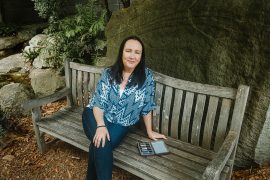By Kylee Hopper
The journey to autism diagnosis can be incredibly overwhelming and tough for many parents and carers. Often early signs go undetected or overlooked and it can be incredibly frustrating. Nadija, a mum of two children with dual diagnosis of ADHD and autism shares her children’s diagnosis story with us in the hope of shedding some light on early signs and how to keep pushing for answers for your children.
Nadija started their spectrum journey when her daughter was 18 months old – at that time their son had just graced their world. They began to notice behavioural changes around this time that didn’t seem to appear “typical”. Nadija grew concerned over behaviours she couldn’t make sense of – hair-pulling, twirling when music wasn’t playing, ‘tantrums’ that would start out of nowhere, late speech, and continuously finding it difficult to engage and play with toys (toys being often thrown or swooshed, rather than played with).
Nadija can empathise with parents concerned about the development of their children, as she discovered that the “right” questions weren’t asked at their maternal/doctor consultations. Nadija remembers taking her daughter to their GP about the hair pulling, late speech, twirling, only to be told that it could just be late speech and that she appeared “fine”. Her hair pulling wasn’t the result of an “ear infection” and an explanation couldn’t be found after numerous visits – what is it the result of? The frustration Nadija faced attempting to find out more about these behaviours felt like a journey in itself. Nadija later learnt that autism was something that people knew little about and the signs were often missed.
Nadija started their spectrum journey when her daughter was 18 months old – at that time their son had just graced their world. They began to notice behavioural changes around this time that didn’t seem to appear “typical”.
More frequently than ever, concerned parents are being turned away and told nothing is wrong with their children. This then leads to children being undiagnosed during crucial early intervention years, and children not acquiring the therapy that could’ve proven highly successful for their development, to thrive and to learn.
So what did Nadija choose to do when her pleas for help were disregarded?
Nadija managed to find a speech therapist that specialised in working with children on the spectrum and secured weekly speech. She thought that if her doctor couldn’t see what was wrong, maybe a speech therapist that works with children on the spectrum may. After their third session, she pulled Nadija aside and said that she should have her checked for autism. Nadija remembers the feeling of fear riddled her body. “What does this mean for her baby girl?” she thought. “What journey will we embark on? Am I capable of helping her thrive? What therapies does she need? How much is this going to cost?”. All these thoughts, fears and more were running through her head.
The waitlist for a paediatrician was long and Nadija wanted answers sooner. She booked an autism assessment through a psychology practice and began the process. This was something that once she began seeing a paed, they would’ve requested be done anyway – so why not begin the process early? Nadija researched different therapy options, studies, and what therapies are best for a child on the spectrum. She settled on a model that she felt would best suit her daughter and her needs.
Nadija’s son’s diagnosis came not long after. Knowing and understanding the signs early, this time she knew what to look out for. He wasn’t responding to his name in play, he wouldn’t copy or mimic her sounds, he was extremely routine based and repetitive in his play of trains – lining up trains and cars but not playing with them. This was all by 8 months old. So, she began the same journey with him. By 16 months, her son was diagnosed.











